Four archeological discovery focuses on the appearance of early cities in the middle of the Yellow River
Author:Guangming Daily Time:2022.09.18
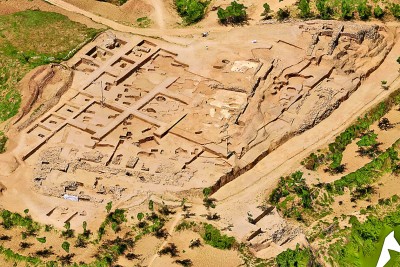
Xinhua News Agency, Xiaoyiang Stone building excavation site in Bicun site in Xing County, Shanxi Xing County
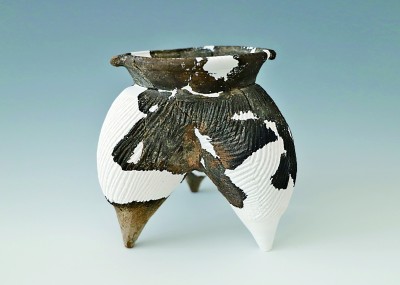
Pottery Xinhua News Agency, unearthed from the site of Bicun, Xing County, Shanxi

Xinhua News Agency, a golden cover unearthed from the Golden Cover of the High -Grade Grand Tomb of Zhengzhou Mall
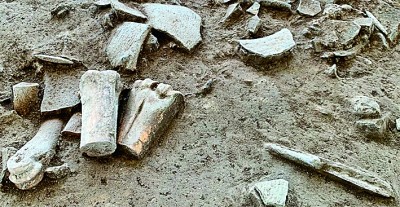
Henan Yanshi Erlitou Site's finely excavated bone -making workshop relics Xinhua News Agency, Xinhua News Agency
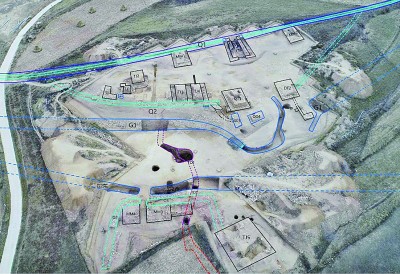
The State Cultural Relics Bureau's picture of the State Cultural Relics Bureau of the Shicheng Site of Houcheng Tsui through the authentic entered the city
Our newspaper, Beijing, September 17 (Reporter Li Yun and Wang Xiaofei) Recently, the State Administration of Cultural Relics held an important progress of the "archeological China" major project in Beijing. The four archeological projects of this work meeting are the latest achievements of the early excavation and research of the early city sites in the Yellow River, and the time is after the formation of Chinese civilization and early development. These latest achievements show the historical process of Chinese prehistoric civilization and early countries.
Site of Shizhi, Houcheng Tsui, Houcheng, Hohhot, Inner Mongolia: the prehistoric prototype of "authentic warfare"
■ Project profile: The Shicheng site of Houcheng Tsui is located in Qingshuihe County, Hohhot City, Inner Mongolia Autonomous Region, with an area of about 1.38 million square meters. Archaeological found that this city site in Longshan period, which is more than 4,000 years ago, has a triple defense system: the first defense system composed of outer city walls, horse noodles, Taiwan bases, and outer ring trenches; The arranged platforms, pier tables, and the second defense system composed of inner rings; the third defense system composed of two horse noodles set up by the main city walls, the main city gate, and the two sides of the main city gate.
The most amazing thing is that two underground channels were found under the city. Sun Jinsong, dean of the Inner Mongolia Autonomous Region Cultural Relics and Archeology Research Institute, introduced that two authentic offensive and defensive dual functions. The widest point of the channel is 3.4 meters, the deepest is 6.3 meters, and the channel top is up to 2.4 meters. There is no hindrance for personnel. It can be seen that people outside the city at that time could enter the city through the tunnel, and then diverted into the city wall to reach the main city. Of course, it is also available. Could these two authentic relics of "authentic warfare" more than 4000 years ago?
■ Expert comment: Song Jianzhong (researcher at the Archaeological Research Center of the National Cultural Bureau)
In the past ten years, archeology has continuously promoted refined excavations and multi -disciplinary cooperation. Shaanxi Shenmu Shiji Site, Shizhi City Site in the back city of Inner Mongolia, and Bicun site in Xingxing County, Shanxi are three levels. The area of Shimi has the largest area, the highest level, and the smallest area of Bicun. And the three sites are all buildings with stone and wood, which also has similarity in cultural appearance. Therefore, I think that Shanxi, Shaanxi, and Inner Mongolia should cooperate to fight together, adhere to the problem -oriented, study the front and rear relationships of the three sites, and clarify whether the three are common. These must have a progressive role in studying the large regional forms of the North.
Site of Bicun, Xing County, Shanxi: Important Cities along the Yellow River around the Yellow River around 4000 years
■ Project introduction: The Bicun site is located in Xing County, Luliang City, Shanxi Province. It is 4,000 to 3700 years ago. It is the first large -scale stone city settlement in the Yellow River coast in the Yellow River in Shanxi. It was also an important Guancheng at that time.
The location of Xiaoyu Liang is the core area of the Bicun site. Archaeologists discovered a group of stone building complexes. The middle house No. 2 was a central house. The houses on the other sides were arranged to westward by the axis. The walls and grounds of these houses are carefully treated, and the walls are placed flat with grass mud on the wall. There are ground stoves in the house, and the maximum diameter of the stove reaches 2.6 meters. In addition to the house in the central building, there is a house in the northwest corner. In the early days, a large open room was divided into small compartments. "It is particularly worth noting that there are steps in the northwest wall of the room, and we speculate that this may be a post." Zhang Guanghui, a researcher at the Shanxi Provincial Institute of Archeology. The site of Bicun is located in the keyway between the west and the Central Plains. There are relatively tight defensive layouts in the walls of the inner and outer city. "Levels". In addition, the gate of the site consists of the large -pier platform of the three "grades" layouts of the east, south, and north, showing the unique type of city gate in the Shicheng site in the river.
■ Expert comment: Han Jianye (Professor of History of Renmin University of China)
The city gate structure of the Bicun site is not only practical in layout, but its symmetrical structure is also strict and has a etiquette. The era of Houchengzui is close to the era of Bicun site, and they are in the early stage of the development of Chinese civilization, and may have a close relationship. In the next step, the relationship between ruins should be discussed in the northern larger scale. For example, what is the relationship between the Bicun site and the Ishi site? What is the relationship between Bicun Site and Shi Yan Site? What is the relationship between the cattle and sheep unearthed from the Bicun site? These relationships still need to be sorted out.
Henan Yanshi Erlitou site: Wang Du puzzle adds a few more pieces
■ Project profile: The Erlitou site is located in Yanshi District, Luoyang City, Henan Province. The existing area of the site is 3 million square meters. The academic community is generally believed to be the capital site of the late Xia Dynasty.
I only knew the "Jiugongge" layout of the Erlitou site before, but the details were not clear. The latest archeological excavation shows that there are rammed earth walls on both sides of urban roads and roads. On the outside of multiple areas outside the palace area and workshop area, there are also wall intervals and protection. There are different levels of buildings and tombs in different grids. Each grid may live in different people. Zhao Haitao, an associate researcher at the Institute of Archeology of the Chinese Academy of Social Sciences, introduced that these all shows that the city of Erli is likely to have the layout of "residential residence, walls outside the district, and burying one".
The latest excavation is also found on the site for the first time. For the first time in the ruins, there are more than 800 pottery with red paint with red paint, suggesting that there may be paint workshops around the surrounding area; Instrument plus workshop. The discovery of these new workshops helps to study the manufacturing process and manufacturing process of the handicraft industry. ■ Expert comment: Leixingshan (Professor of History College of Capital Normal University)
The discovery of the Erlitou site "Jiugongge" is a major breakthrough in Xia Culture and Archeology. The Lifang system used to be an important system in the city, but it appeared late. The "Jiugongge" of Erlitou is the "li" that can be confirmed.
In the past, archeological work discovered the turquoise workshop, and now it is found that the workshop of the bone corner and lacquerware has strengthened some characteristics of Erlitou as the capital. It can also be seen from the archeological discovery that although the age and crowd are different, there are similar cultural appearances in the ruins of Tiannan and North. The approximation and continuity of cultural characteristics, the same and inheritance of cultural genes are the diverse and continuous vivid examples of Chinese civilization.
Zhengzhou Shangdu Academy Street Business Cemetery: For the first time, the Central Plains discovered the golden face of the early Shang Dynasty
■ Project profile: Zhengzhou Shangdu Academy Street is located in the southeast of the city of Zhengzhou Mall. It is a high -grade aristocratic cemetery in the early and middle periods of the Shang Dynasty.
Two west ditch was found on both sides of the cemetery, and the tombs were mainly distributed between the two trenches. Tomb No. 2 is the largest number of funerals, the most abundant, and highest grades. In addition to a large number of bronze wares, it also unearthed 88 % gold content, 40 grams of gold, and gold jewelry such as gold bubbles and gold foil. For gold jewelry and other gold jewelry. For gold jewelry such as gold bubbles and gold foil. Discuss the golden mask appeared in Sanxingdui, and the cultural style of gold decoration in southwestern China, etc., provides new reference materials. Huang Fudheng, a researcher at the Zhengzhou Cultural Relics and Archeology Research Institute, introduced that the phenomenon of 6 martyrs at the bottom of the tomb No. 2 is very rare in the early and Chinese business culture. know.
■ Expert comment: Chen Xingcan (researcher at the Institute of Archeology of the Chinese Academy of Social Sciences)
The age of Zhengzhou Shangdu Academy Street is a critical period between the early businessmen and the Chinese businessmen. It was one period earlier than Yin Ruins and one period later than the lower -level culture of Zhengzhou Erligang. In the past, the early and middle stages of Zhengzhou business culture rarely found tombs, especially high -level large -scale tombs, so the discovery of this large tomb was of great significance. The Shang Dynasty began a gold device, but all of them were small. Such a large amount of gold ornaments unearthed in M2 tombs, etc., provided new research materials for the emergence of gold wares with Eurasian grasslands and Western relations. Essence
- END -
Ecological Civilization Demonstration Construction (292) | "Green Water and Qingshan is Jinshan Yinshan" practice innovation base -Dadong Village, Liuwu New District, Lhasa City, Tibet Autonomous Region

In 2021, the Ministry of Ecology and Environment was named for 100 national ecolog...
A period of the fantasy journey of yangwu, light up in the summer
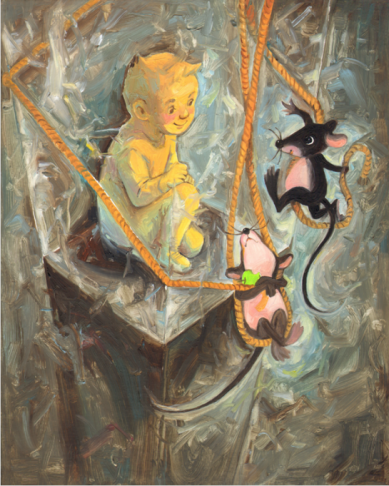
A period of the fantasy journey of yangwu,Light up summerLiuqin(Young poet, member...